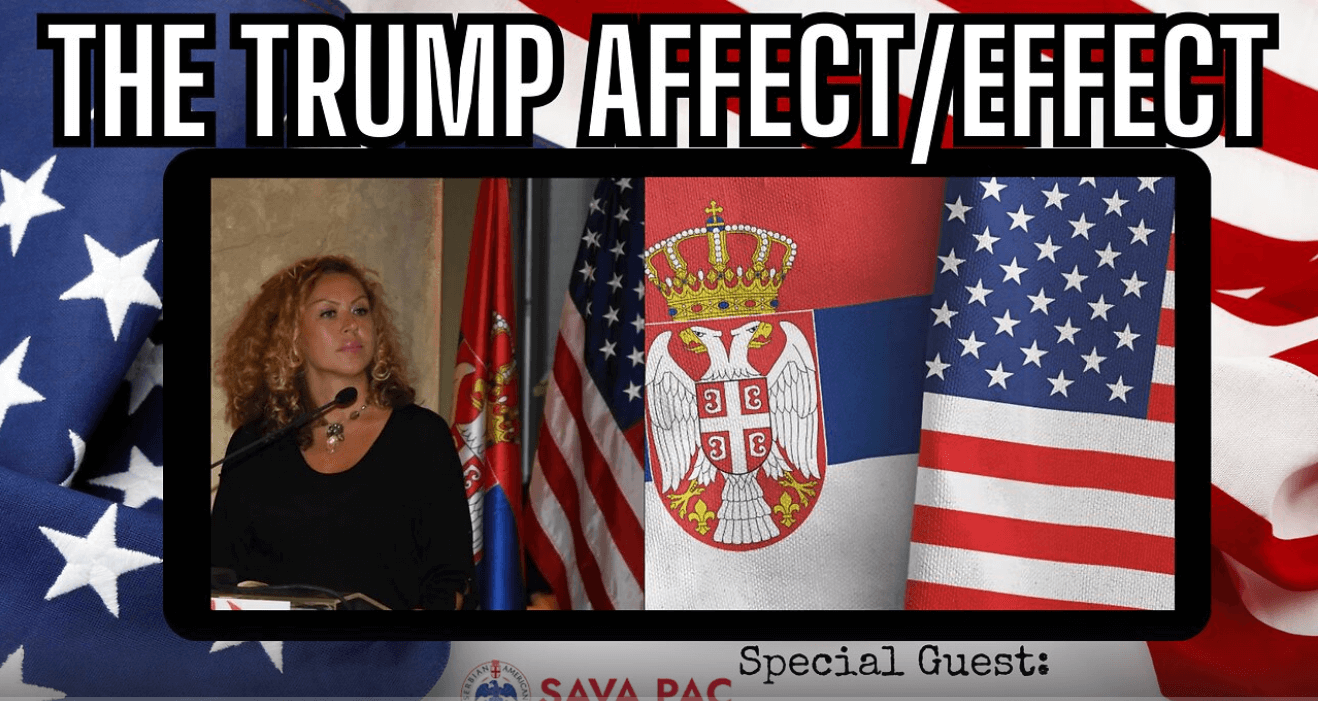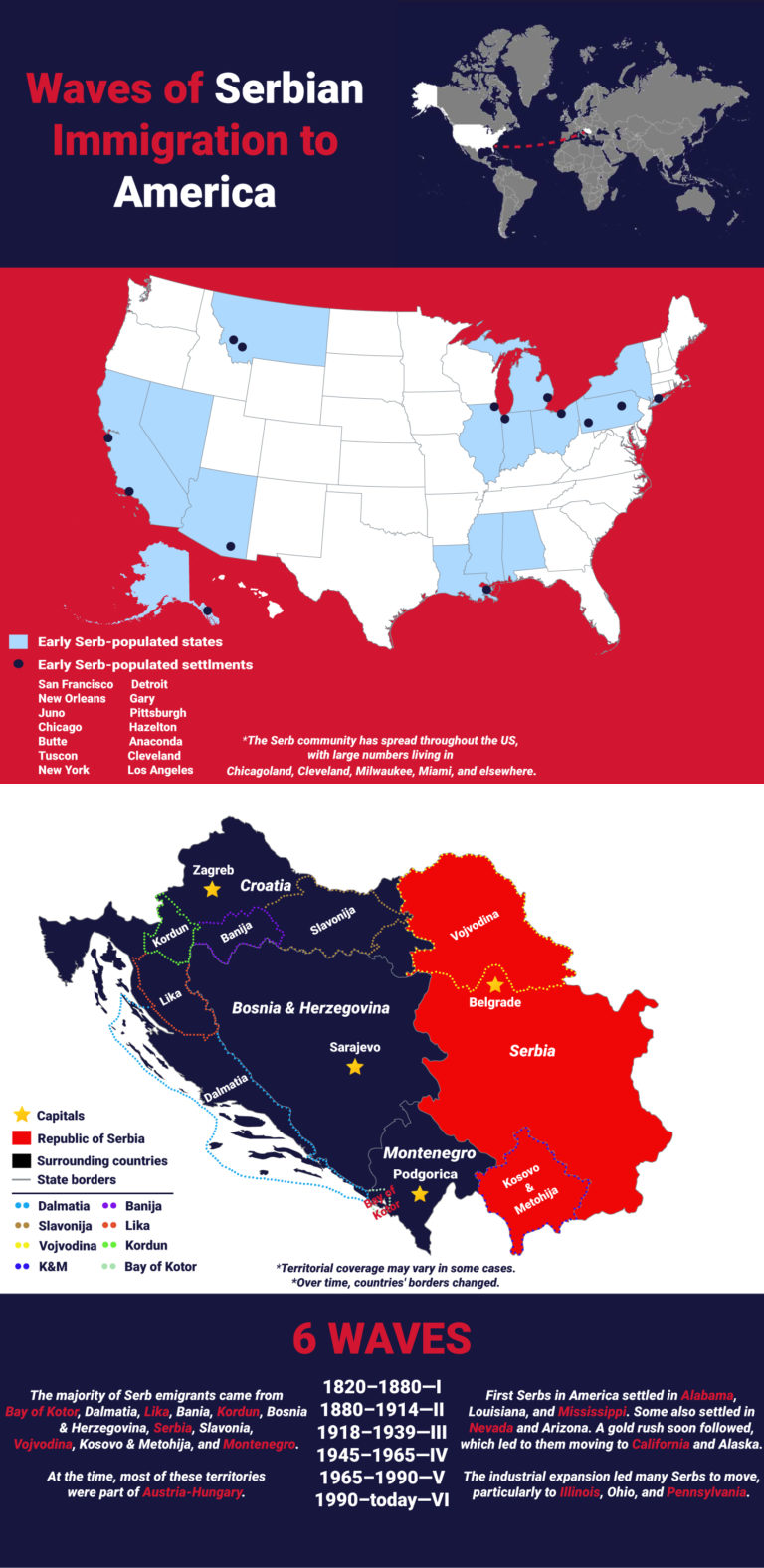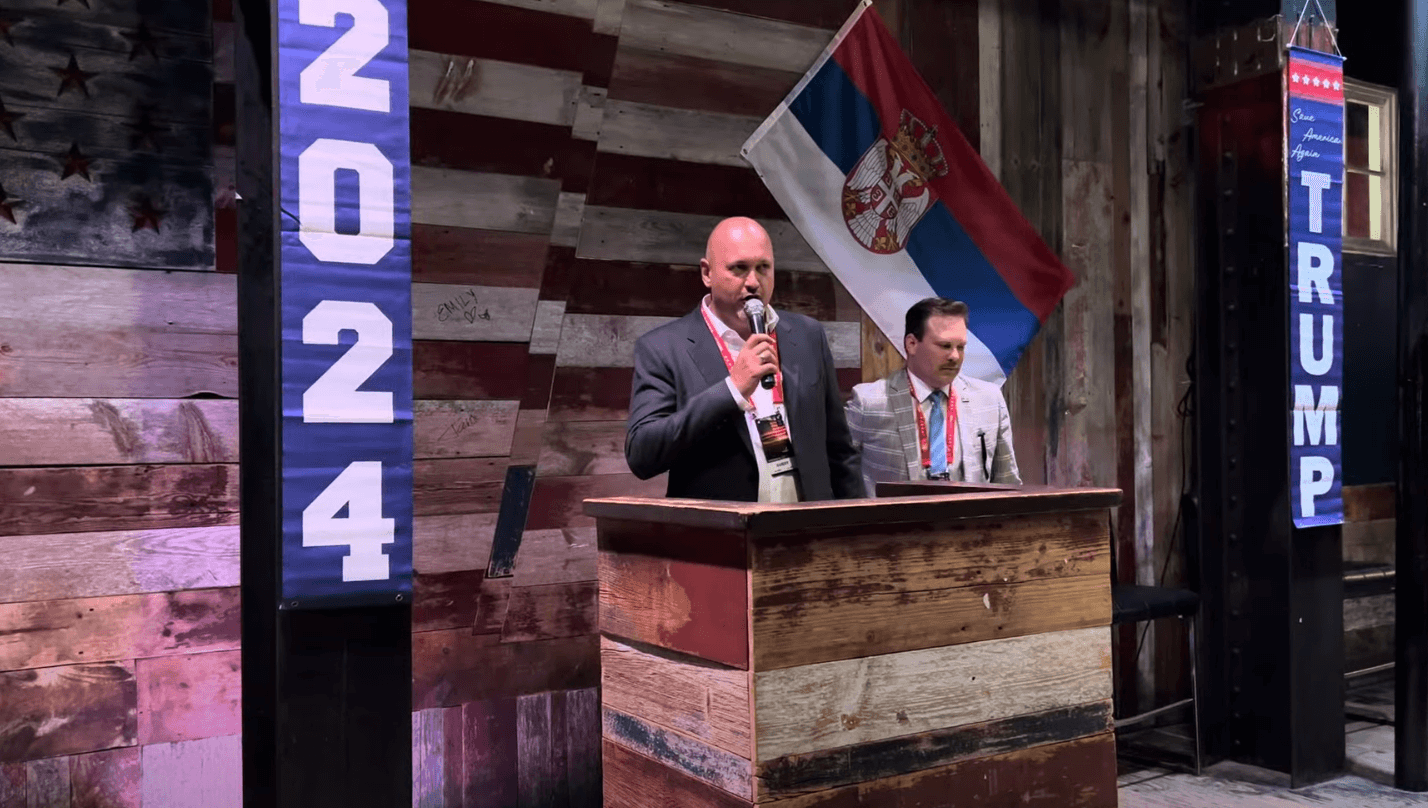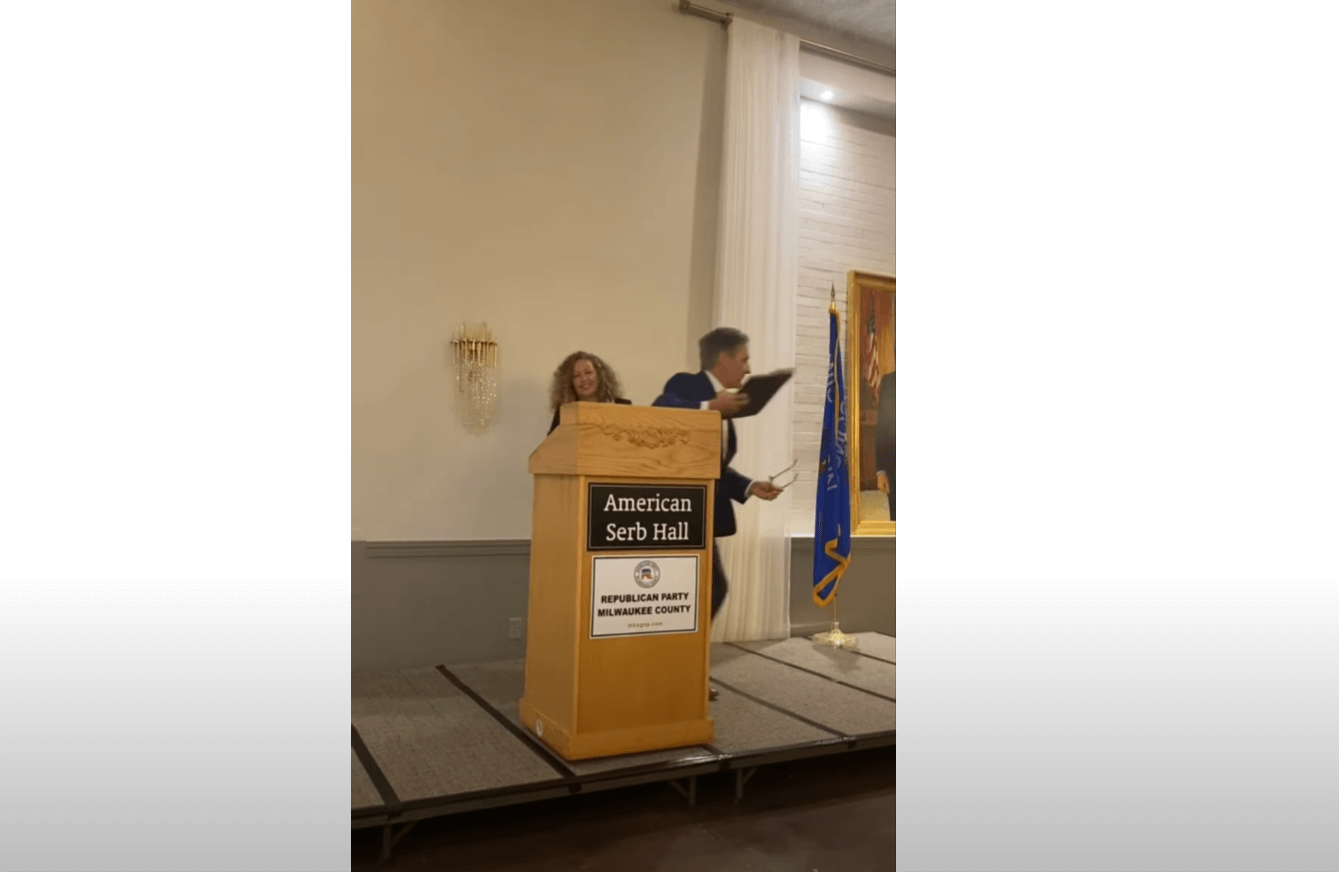
The TRUMP Affect/Effect on Global Stability w/ Special Guest Dr. Olga Ravasi
The TRUMP Affect/Effect on Global Stability w/ Special Guest Dr. Olga Ravasi In this post I am expressing my 1st Amendment Right of #FreeSpeech
Over the last two centuries, Serbs have spread across the US. They came in waves, and each wave was different for many reasons. Immigration to the United States was mainly caused by poor economic conditions at home and the conflicting political conditions in the Balkans. Understanding waves of Serbian Immigration to America are essential for the Serbian-American community since different arrival periods affected their unity the most.
George Fisher paved the way for many Serbs who became irreplaceable members of American society. He was the first of many Serbs who came to the USA in pursuit of happiness, a better life, and freedom.
3 million Slavic immigrants (about 30,000 Serbs and Montenegrins together) were recorded in the 1910 USA census.
Some resources mention that over a million followed him from 1815. We can’t know with certainty since the US didn’t keep accurate records; many Serbs were categorized as Austrians, Hungarians, and even Syrians.
In the beginning, young guys migrated, and then whole families followed.
The Serbs came in waves, and different authors made their divisions according to the periods when they settled in America. We can divide those waves of Serbian immigration to the United States of America into six periods:
Before diving into each in-depth, it’s important to point out the complexity of the Balkans.
Without going into a more profound historical review (and “provoking” historians with words about Serbian roots and legacy long before they allegedly settled on Balkan), we’ll explain the context of the Serbs by saying that;
Serbs are native to the Balkans. They covered a vast territory throughout the time. Still, they lived in different countries, from the Medieval Serbian state, the Turks, Austrian-Hungarian Empire, to modern Serbia, which gained independence in 1878.
Yet, many of them outside of the country of Serbia were not considered Serbs (according to some). They melted with the local inhabitants, whether in Dalmatia, the Kordun, Lika, etc., or the USA afterward. Even though they were declared Serbs for many different reasons and actions, they were believed not to be considered Serbs.
Perhaps the best example of this tendentious point of view is Nikola Tesla.
Despite declaring himself a Serb (and American) with ground-breaking evidence about it, some still protest that he is not. He was born in Smiljan in what was then part of the Austrian Empire (today’s Croatia) in the family of Serbs. His father was a Serbian priest of the Eastern Orthodox Church.
Economic reasons mainly caused the first wave of immigration.
Industrial development was slow, and being a peasant became more complex; high taxes, low wages, and break-up of family cooperatives (“called “Zadruga”) resulted in the excessive land subdivision and, consequently, deprivation of peasantry in most of the territory Serbs covered.
On top of that, nature forces occasionally made things even harder. As in the 1880s, when the majority of Dalmatian vineyards were destroyed.
Still, some immigrants were chasing adventure or running away from the political or religious repressions back home. Back then, compulsory military service in Austria-Hungary Empire lasted for three years. It’s no wonder that many Serbs decided to travel across the globe to find their place under the sun.
Most of the immigrants at that time were from Austria-Hungary, Dalmatia, and Montenegro; more precisely, from the Bay of Kotor, Dalmatia, and old Herzegovina (today’s Montenegro).
This period in American history was progressive: a time of national expansion and reform, the Civil War and reconstruction, and a momentum of industry boom in favor of immigrants who sought jobs.
The immigrants believed that if you worked hard enough, you would be able to rise to the top.
America was ideal for them.
It was a country of rapid economic growth, with freedom of religion and the possibility to associate and prosper; simply, it was a country of opportunities.
At first, they arrived in New Orleans and settled in Alabama, Louisiana, and Mississippi. Some also settled in Nevada and Arizona. After the discovery of gold, many moved to California; its climate was similar to that of the Dalmatian coast, making them less nostalgic.
In 1859, they formed the first organization (support society) in San Francisco. Its role was to support and help financially to the immigrants.
Serbs realized that organization and cooperation were prerequisites for their success in the US.
The next wave of immigration was probably the most tumultuous.
After the civil war and industrial expansion, America opened its doors to immigrants. Pennsylvania became a leading producer of iron and steel.
Conversely, Chicago and its surrounding areas (Detroit, Gary) have become industrial centers.
Serbian immigration became more extensive and organized. Most settled in Pittsburgh, Hazelton, Chicago, Butte, Anaconda, Gary, Detroit, Cleveland, and other places.
Back then, Serbs were often employed in mines.
Apart from those mentioned above, many settled in Alaska, where the primary hub was Juno.
And wherever they settled, they established various organizations.
Most importantly, they stuck to each other daily.
On the one hand, they were seeking to fit into American society, but on the other hand, to nurture the heritage of their homeland (language, lyrics, and customs).
Immigrants came from territories governed by Austria-Hungary and Turkey at the time, including Lika, Bania, Kordun, Bosnia and Herzegovina, Serbia, Slavonia, Vojvodina, Kosovo and Metohija, and Montenegro.
This was when the immigrants founded the first Serbian newspaper in the USA called “Sloboda” (Liberty). It was the way Serbs could read about local communities and hear more about the situation in the motherland since things started to boil over in the Balkans.
However, the Serbs’ religious needs were yet unsatisfied since only Protestant and Catholic churches existed in the places where they lived.
Building their churches was a twist.
Serbs built the first church in the US (Jackson, near Sacramento) in 1894. The church was named Saint Sava by the first Serbian saint.
Attracted by the gold rush, modest Serbian immigrants who came to California contributed. The first parish was Sevastijan Dabović, which we’ll discuss in further articles.
After Saint Sava, many Serbian churches in the US were built (from Alaska to Miami).

Several things contributed to the third wave.
In the first place, America changed the laws about immigration, which drastically limited immigration. There was also a growing tendency in the US to Americanize immigrants. Many settlers had improved their position in the US system by this period.
Their kids were born in the US; soon, English was the primary language in Serbian houses.
A new Serbian-American identity was born.
Without a doubt, WWII impacted this wave. Both communism and fascism emerged, and neither had followers among American Serbs.
There were Serbs who felt like Yugoslavians and supported the other side. But, most of the Serbs in the USA during and after the war were pro-monarchist. They endorsed the antifascist and anti-communist fight of general Dragoljub Mihajlović.
But that was not the main reason for discord among Serbs in the States. It turned out later that the main reason Serbs weren’t united was ideologically colored by lies and division within the Serbian Orthodox Church (caused by the Communist party).
As for Serbs and unity, it is interesting to mention one thing that almost became a myth and is something that, unfortunately, most of us heard of and are a part of — Serbian divides.
How and why that occurred is less important. Perhaps Dusan Kovacević’s work (“20 Srpskih Podela”) perfectly describes them. Some of the divides are among the Serbs, who are:
Anyway, for that period’s context, many Serbian-Americans were deeply involved politically or as soldiers and officers in the US army during the war.
They were worried about their compatriots in Yugoslavia.
Because there was a major shift in global politics and the economy. The situation in the Balkans didn’t differ. After the bloody war, many opponents of a new regime and communism left Yugoslavia.
Some escaped to save their lives, and some didn’t see themselves living in such a system. That led to dozens of thousands of newcomers that arrived from Yugoslavia. They were political immigrants.
Usually, they arrived in New York and spread along the Chicagoan basin and into California.
After the prisoners of war, refugees, fugitive monarchists, and anti-communists settled, they formed a powerful Serbian colony in America.
It was a time when fewer immigrants came compared to the previous period. The reason was simple — most of them had already come after the war. In this period, more and more immigrants with solid status and education emigrated to chase the “American dream.”
Are you intrigued by what comes next?
The last wave occurred in the 90s due to Yugoslavia’s civil war and breakup. This time, apart from the Milosević opponents, refugees, and military fugitives, experts and young intelligence joined the Serbian diaspora in the USA.
Some came to study in the US, some of whom will return to their homeland. Still, some will stay and enrich the Serbian community in the United States further.
Places like Tuscon, Chicago (Chicagoland), Detroit, Pittsburgh, New York, and Los Angeles were their new homes.
The Serbian-American community is heterogeneous. Serbs of different statuses are living in the US for one or several generations. It’s no surprise that they have different views on religion, historical events, and Serbian or US politics.
But, our roots are something we’ve in common. The Serbian roots keep us grounded and responsible for fighting for a better tomorrow.
And now is a milestone, not just for us as individuals but for our community.
Let’s leave issues such as Red vs. Blue, Chetniks vs. Partisans, or Serbs vs. Yugoslavs in the past (to rest).
It’s not time for new divisions.
It’s all about making America free, and you have the power to do it!
Let’s divide no more and organize to defend our interests and values.
Please share this article with your fellow Patriots, family, and friends.
Serbian American Voices Must Be Heard.

The TRUMP Affect/Effect on Global Stability w/ Special Guest Dr. Olga Ravasi In this post I am expressing my 1st Amendment Right of #FreeSpeech

Serbs for Trump 2024 Deliver Wisconsin at the RNC Serbs for Trump 2024 team launches the Deliver Wisconsin initiative at the Republican National Convention, with

We The People 2024 Milwaukee Serbs for Trump 2024 campaign kick-off in partnership with the Milwaukee County GOP at the historic American Serb Hall, featuring
© SERBIAN AMERICAN VOTERS ALLIANCE (SAVA PAC) 2023. All Rights Reserved.
proudly developed by Serbian-American patriots at Executive Digital